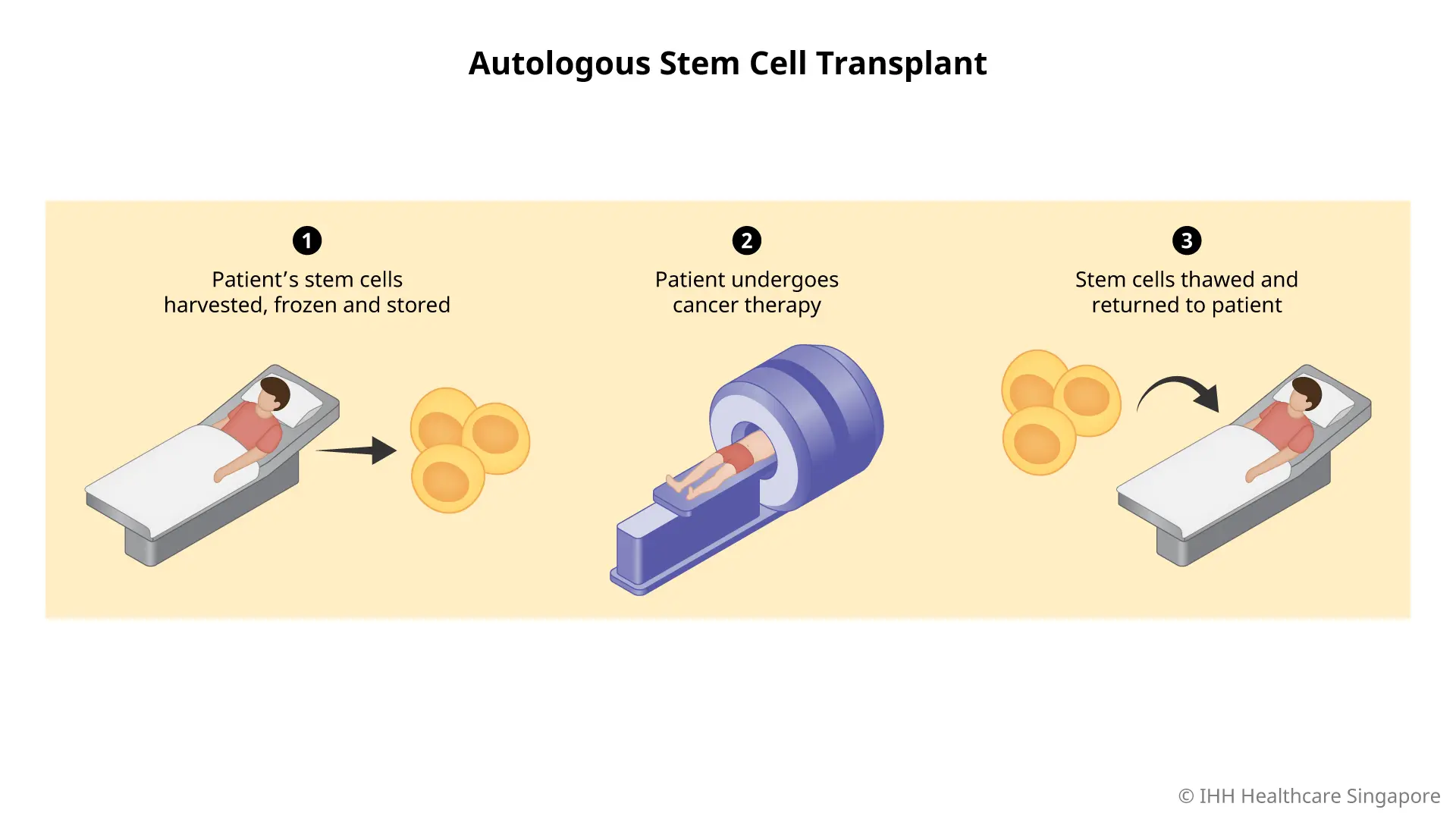-
-
Featured Care Areas

Autologous Stem Cell Transplant
What is an autologous stem cell transplant?
An autologous transplant is stem cell transplant (ASCT) that uses your own stem cells, which means you are your own donor. In this type of transplant, your stem cells are harvested (removed), frozen and stored before you receive high doses of radiation therapy or chemotherapy, or both.
After you receive your high-dose cancer treatment to remove cancerous cells from your body and/or marrow, your harvested stem cells are thawed and returned back into you. This is known as a “rescue” in autologous transplant.
Autologous vs allogeneic stem cell transplant
An autologous transplant uses your own stem cells for transplantation. In contrast, an allogeneic stem cell transplant uses cells from another donor. The donor stem cells must have a genetic typing that matches yours. Usually, donors come from a direct relation (such as a sibling).
Why do you need an autologous stem cell transplant?
Autologous transplant is a type of stem cell transplant used to treat:
- Lymphomas
- Multiple myeloma and occasionally for certain rare solid cancers and uncontrolled autoimmune conditions
Your doctor may recommend an autologous stem cells transplant if your disease will benefit from one as part of your treatment.
Since you are getting your own cells, there is no risk that your immune system will reject the transplant or that the transplanted cells will attack your own body.
A disadvantage of an autologous transplant is the side effects of high dose chemotherapy such as hair loss, nausea, vomiting, diarrhoea, ulcer in the mouth and infection due to low white cells count.
The disadvantage of an autologous transplant is that cancer cells may be harvested along with the stem cells and then reinfused back into the body. To minimise risk, doctors may treat the cells first with anti-cancer drugs or other therapies to reduce the number of cancerous cells that may be present.
Who should not undergo autologous stem cell transplant?
You may be ineligible for an autologous stem cell transplant if you have other major health problems such as serious heart, lung, liver, or kidney disease.
What are the risks and complications of an autologous stem cell transplant?
Cancer cells may be harvested along with the stem cells and then reinfused back into the body. To minimise risk, your doctor may treat the cells first with anti-cancer drugs or other therapies to reduce the number of cancerous cells that may be present.
Many of the side effects of an autologous transplant result from the chemotherapy or radiation therapy given before the transplant. Others are related to the stem cell transplant.
Initial side effects can include:
- Mouth and throat pain
- Nausea and vomiting
- Bacterial, viral or fungal infections
- Bleeding and anaemia (low red blood cell count)
- Lung problems such as pneumonitis, an inflammation of lung tissue
- Side effects from conditioning chemotherapy, such as injury to heart muscles, kidney and liver
Longer-term side effects can include:
- Eye problems such as cataracts
- Organ damage
- Return of the cancer
- Secondary cancers
- Lymph tissue problems
- Infertility
- Thyroid problems caused by hormone changes
Why choose Parkway East Hospital?
At Parkway East Hospital, our team of medical oncologists and nursing professionals are here to help with the diagnosis and treatment of cancer. Conveniently located in the east of Singapore, we provide holistic and customised treatment in a caring environment to support each patient on their road to recovery.
Find doctors from our allied hospitals
We offer a full spectrum of healthcare services under IHH Healthcare Singapore.
Check if your preferred hospital offers this treatment:
This page has been reviewed by our medical content reviewers.
Need help?
For enquiries, please call
+65 6377 3737
For appointment bookings, please WhatsApp
+65 8111 3777




